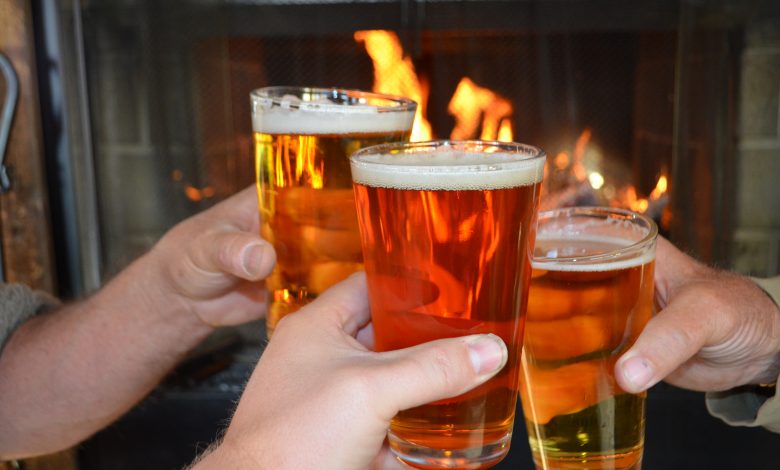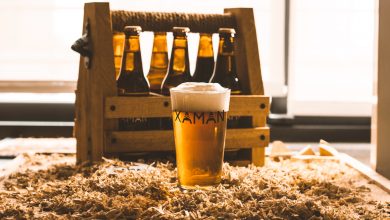The Microbrewery Revolution

The rise of the microbrewing industry in the United States in the past three decades has seen breweries pop up seemingly everywhere. However, the history of the microbrewery is hardly a phenomenon of the 20th and 21st centuries. In many ways, the microbrewery revolution is a return of brewery practices and markets that existed before the time of Prohibition.

The Shadow of Prohibition
From 1920 to 1933, the United States ran an experiment. That experiment was the total banning of alcohol sales and consumption in the nation. While the test failed, and Prohibition was repealed, the effects of the ban have had long-term implications for the beer industry.
Before Prohibition started, there were an estimated 20,000 breweries, cideries, wineries, and distilleries in the United States. The actual number is impossible to count because alcohol production was not regulated in most parts of the county. In 1915, for example, there were roughly 1,345 official breweries in operation. A year after Prohibition ended in 1934, only 756 breweries remained operating. By 1980, there were only 101 breweries in the entire United States.
After World War II, large breweries used stringent legal laws to stamp-out the competition of smaller regional breweries. The process of starting new beer production became more expensive, and the Federal Government dictated the list of requirements needed to open. Coupled with large factories, cheap brewing ingredients, and Federal Government subsidies, the top 10 percent of breweries in 1981 accounted for 93.9 percent of all beer produced.
Sparking a Revolution
A quiet revolution started to take place in 1979, a revolution that would change the face of beer 40 years later; homebrewing was legalized.
It is impossible to overstate the effect that the legalization of homebrewing has had on the beer industry. Homebrewing was outlawed in 1920 with the rest of Prohibition, but it remained banned Federally until 1978 when Jimmy Carter signed the right to homebrew into law. This is the moment that the microbrewery movement was kindled or rekindled, but it took a while for change to take place in the beer industry.
Most states were allowed to set their own laws and regulations regarding homebrewing, and many held to the old rules of Prohibition, often supported by the large breweries. It took time, but 1980 was the peak of corporate beer in the United States. By 1990, there were 286 breweries. The big three, Anheuser-Busch, Miller, and Coors, accounted for 81 percent of all beer sold in 2000, but that would be the peak for market control, as some of the earlier homebrewers had been opening breweries for three decades by that point.
Fast forward to 2018; there are an estimated 7,346 breweries in the United States, and more opening every year. The share of the big breweries continues to be chipped away by craft and microbreweries. At the start of 2019, craft and microbreweries accounted for a 24.2 percent share of beer sales, double the amount from ten years earlier.

It’s All in the Ingredients
One of the main reasons for the microbeer revolution came down to the fight between quantity and quality. Before Prohibition, most breweries used classic beer ingredients. These ingredients have been used in beer production since the first seeds of civilization: barley, hops, wheat, and yeast. However, after Prohibition, large corporate breweries turned to brewing beer with cheap and plentiful commodity ingredients.
Corn and rice became the staples of what is called lite beers. Hops were used for their qualities of preservation and not flavor. And yeast was genetically modified to keep beer artificially consistent. Another change was how beer was sold before Prohibition. In 1915, 85 percent of beer was sold from kegs, usually at, or very near to the brewery. Because large scale pasteurization of beer had not been developed yet, beer had a much shorter shelf life and could not be transported far because it would spoil quickly.
After World War II, canning lines that had been used for sending food to soldiers were converted into canning beer. Improved and new interstate-highways coupled with canned beer meant that by 1981, 85 percent of beer was sold in cans or bottles, rather than from taps. The draft beer had gone from common to rare in less than 60 years. The beer that was sold was uniform, clear, and lacked any real taste. Big breweries were after quantity and consistency, not quality and flavor.
But there were still enough people that remembered that beer came in an endless amount of varieties, styles, and flavors, and it was the homebrew revolution that rekindled the art of brewing in the United States.
Microbreweries tend to use malts, hops, yeasts, and wheat in their beers. Different types of malts, yeasts, and other grains are what allow different styles of beers to be brewed. This focus on quality is what has allowed the microbrewery movement to expand at such a fantastic pace since 1980.
The Complete Joy of Homebrewing
No history of microbreweries can overlook the contribution of one man, in particular, Charlie Papazian, author of The Complete Joy of Home Brewing. The book is monumental and is the inspiration of many, if not all, brewery owners and homebrewers.
Papazian took no time in organizing homebrewers across the nation after homebrewing become legal in 1979. In 1979, he founded the Association of Brewers and served as president until 2005. He founded the American Homebrewers Association and was one of the founders of the Great American Beer Festival held in Denver every fall.
It was Papazian that showed would-be brewers how to get the most out of homebrewing, connecting farmers and malt production and making sure that new breweries had the ability to work together as they fought against the big three mega-breweries.

It is About Community
While the microbeer movement is indeed about better quality beer brewed with better quality ingredients, the main attraction has been the community that is built around each brewery or homebrewing group. Beer has always been a social beverage, shared with friends and neighbors of a community. Much of that community was lost during the dark age of corporate brewers after World War II. Now, many neighborhoods have small brewpubs to gather around, enjoy good conversation, and of course, drink good beer.
The exciting thing about microbreweries is how it is a decentralized movement. No one person or organization is founding breweries or homebrew groups across the United States. It’s a simple passion that carries each local area with its own styles, tastes, and beer variety preferences. Individual styles come and go, in and out of fashion. But regardless of the time and location, there is now a microbrewery close to anyone with an interest in good beer.
The Definition of a Microbrewery
The microbrewery story is more nuanced than presented so far in this article; as breweries have grown from small homebrewers working out of garages to multi-state corporations, the question of how a microbrewery is best-defined crops up. The Brewers Association defines a microbrewery as “a brewery that produces less than 15,000 barrels of beer per year and sells 75 percent or more of its beer off-site. Microbreweries sell to the public by one or more of the following methods: the traditional three-tier system (brewer to wholesaler to retailer to consumer); the two-tier system (brewer acting as wholesaler to retailer to consumer); and directly to the consumer through carry-outs and/or on-site taproom or restaurant sales.”
There is more behind the concept of a microbrewery than just a definition of the number of barrels brewed or the glasses of beer sold. The central understanding of what constitutes a microbrewery is that the brewery sells its beer directly to customers. Plus, the brewery is owned by local and independent owners.
Customers expect that a microbrewery will use real ingredients that shy away from commodity grains such as corn and rice. It is also expected by customers that most of the beer is served in the tasting room of the brewery.
Finding Your Microbrewery
The microbrewery movement continues to grow each year, and it is expected that there will be more than 10,000 breweries in the United States by 2022. In many ways, that is an even higher amount than at the turn of the 19th century.
The easiest way to become a part of the microbrewery movement is to find a brewery and drink beer. However, it has become popular for many people to visit every microbrewery in a region, and there are few ways to research the breweries worth visiting.
Microbrewery.com is creating a list of spotlight breweries in the United States. Be sure to check out the home page regularly for updates.
There are also many websites that allow beer drinkers to track and rate the beers they drink at various breweries. Untappd is one of the most popular apps for phones currently. The Brewers Association Website also keeps a record of all the active breweries in the United States. Often, a Google search will get you started on your brewing adventure.



